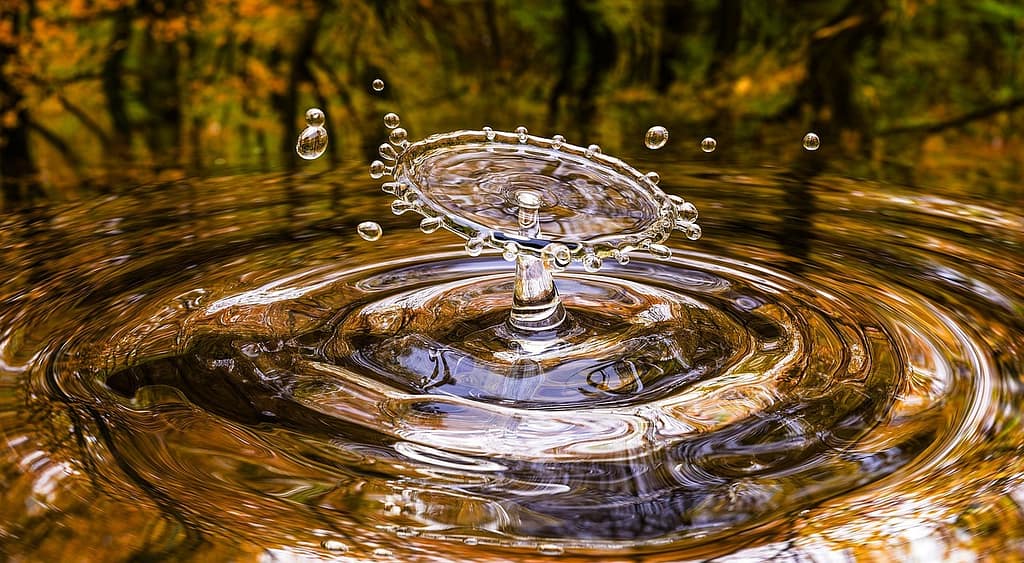Wetlands, lush expanses teeming with life, are more than just picturesque landscapes. They are nature’s most efficient and important water purifiers. From trapping pollutants to transforming nutrients, wetland plants play a vital role in maintaining the health of our aquatic ecosystems. In this article, we’ll discuss the science behind these natural purifiers, explore different types of wetland plants and their roles, review real-world case studies, and discuss the importance of conservation efforts. Let’s uncover the hidden heroes of our wetlands.
I. The Science Behind Wetland Plants as Water Purifiers
How Wetland Plants Clean Water
Wetland plants are remarkable for their ability to clean water through natural filtration processes. Their roots, stems, and leaves work together to trap pollutants, absorb nutrients, and break down organic matter.
Explanation of Natural Filtration Processes
At the core of wetland water purification is the complex network of plant roots. These roots form a physical barrier that traps sediment and particulate matter, preventing them from flowing into larger water bodies. Dense plant growth slows water flow, causing sediment to settle.
Role of Roots, Stems, and Leaves in Trapping Pollutants
The roots, stems, and leaves of wetland plants play different roles in water purification. Roots support the plants and provide a surface for microbial communities that break down organic pollutants. Stems and leaves capture airborne pollutants and provide additional surfaces for nutrients to be absorbed.
Nutrient Uptake and Transformation
Wetland plants absorb excess nutrients such as nitrogen and phosphorus from the water. These nutrients, often from agricultural runoff, can cause harmful algae blooms if left unchecked. Through processes such as nitrification and denitrification, wetland plants convert these nutrients into less harmful forms, effectively cleaning the water.

Key Mechanisms of Filtration
Wetland plants use several mechanisms to filter water, each of which contributes to the overall purification process.
Sediment Trapping
When water flows through the wetland, the dense vegetation acts as a filter that traps sediment. This process prevents soil erosion and maintains water clarity, which is essential for aquatic life.
Nutrient Absorption (e.g., Nitrogen and Phosphorus)
Plants absorb nutrients directly from the water. Nitrogen and phosphorus, which are common in fertilizers, are taken up by plants and used for growth. This reduces the nutrient load in the water and prevents eutrophication.
Breakdown of Organic Matter
The microbial communities associated with wetland plants play a key role in breaking down organic matter. These microorganisms decompose dead plant material and other organic matter, converting them into nutrients that plants can absorb.
II. Types of Wetland Plants and Their Purifying Roles
Wetland plants are diverse, with each type contributing uniquely to water purification. Let’s explore the main categories: emergent, submerged, floating plants, algae, and mosses.
Emergent Plants
Definition and Examples (e.g., Cattails, Bulrushes)
Emergent plants have roots in the soil, but their stems and leaves protrude above the water surface. Examples include cattails and bulrushes.
Their Role in Water Purification
These plants are particularly effective at trapping sediment and absorbing nutrients. Their extensive root systems stabilize soil and provide habitat for beneficial microorganisms.
Submerged Plants
Definition and Examples (e.g., Eelgrass, Pondweed)
Submerged plants grow entirely underwater. Examples include eelgrass and pondweed.
How They Contribute to Clean Water
Submerged plants oxygenate the water through photosynthesis, which supports aquatic life. They also provide surfaces for microbial communities that break down pollutants.
Floating Plants
Definition and Examples (e.g., Water Lilies, Duckweed)
Floating plants are not attached to the soil and float on the surface of the water. Examples include water lilies and duckweed.
Their Unique Purification Functions
These plants absorb nutrients directly from the water column. Duckweed, in particular, is highly efficient at removing nitrogen and phosphorus from water bodies.
Algae and Mosses
Role in Nutrient Cycling and Water Quality
Algae and mosses play important roles in nutrient cycling. Algae photosynthesize and produce oxygen, while mosses stabilize sediments and provide habitat for microorganisms.
Examples and Importance
Examples include chara (a type of green algae) and sphagnum moss. These organisms are essential for maintaining water quality and supporting diverse ecosystems.

III. Case Studies of Wetland Plant Purification in Action
Real-world applications of wetland plants as water purifiers highlight their effectiveness and versatility.
Constructed Wetlands for Wastewater Treatment
Overview of Constructed Wetlands
Constructed wetlands are engineered systems that mimic natural wetlands. They are designed to treat wastewater using plants, soil, and microbial communities.
Success Stories and Examples from Around the World
Constructed wetlands have been successfully implemented in various countries. For example, in Denmark, constructed wetlands treat agricultural runoff, significantly reducing nitrogen and phosphorus levels. In China, the Baiyangdian constructed wetland treats urban wastewater, improving water quality and providing habitat for wildlife.
Natural Wetlands Protecting Water Bodies
Examples of Natural Wetlands Maintaining Clean Lakes and Rivers
Natural wetlands such as the Everglades in Florida play an important role in protecting water bodies. These wetlands filter pollutants from agricultural runoff, maintaining the health of nearby lakes and rivers.
The Impact on Local Ecosystems and Communities
Healthy wetlands support biodiversity, providing habitat for many species. They also benefit local communities by improving water quality, boosting fisheries, and providing recreational opportunities.
IV. The Importance of Wetland Plant Conservation
Protecting wetland plants is essential to maintaining the health of our ecosystems.
Threats to Wetland Plants
Human Activities (e.g., Pollution, Development)
Wetlands face many threats from human activities. Pollution from agricultural and industrial sources, as well as urban development, destroys wetland habitats.
Climate Change and Its Impact
Climate change exacerbates these threats by altering rainfall patterns and increasing the frequency of extreme weather events, placing further pressure on wetland ecosystems.
Conservation Efforts and Success Stories
Current Initiatives and Organizations
Many organizations are dedicated to wetland conservation, including the Ramsar Convention and Wetlands International. These groups work to protect and restore wetlands worldwide.
Examples of Successful Conservation Projects
Successful conservation projects include the restoration of the Hula Valley wetlands in Israel and the protection of the Pantanal wetlands in South America. These efforts have resulted in improved water quality, increased biodiversity, and enhanced ecosystem services.

V. How You Can Help Protect Wetland Plants
Everyone can play a role in protecting wetland plants and their ecosystems.
Personal Actions to Support Wetland Conservation
Tips for Reducing Your Impact
Simple actions such as reducing the use of fertilizers, disposing of waste properly, and conserving water can greatly reduce your impact on wetlands.
Ways to Get Involved Locally
Joining local conservation groups, participating in wetland cleanups, and advocating for wetland conservation policies are effective ways to get involved.
Supporting Conservation Organizations
Highlighting Key Organizations
Support organizations such as the Wetlands Initiative, Ducks Unlimited, and local conservation groups that focus on wetland conservation.
How to Donate or Volunteer
Consider donating to these organizations or volunteering your time to help with conservation projects. Every contribution helps protect these important ecosystems.
VI. Conclusion
Recap of Wetland Plants’ Vital Roles
Wetland plants are indispensable for their role in purifying water, supporting biodiversity, and maintaining ecosystem health.By supporting wetland conservation efforts and taking individual action, we can ensure that these natural water purifiers continue to thrive. Together, we can protect wetlands and ensure a healthy future for our planet. Let’s promote the cause of wetland plants and take responsibility for preserving these invaluable ecosystems.





